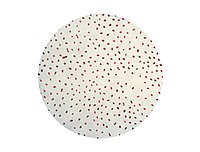
Photo from wikipedia
Canine brucellosis is primarily caused by Brucella canis, but other Brucella species can also cause the disease. Identifying sequences specific to B. canis and establishing PCR assays that can distinguish… Click to show full abstract
Canine brucellosis is primarily caused by Brucella canis, but other Brucella species can also cause the disease. Identifying sequences specific to B. canis and establishing PCR assays that can distinguish between B. canis and other Brucella species is essential to determine the etiology of canine brucellosis and the source of infection and to achieve effective control. We analyzed the gaps and SNPs of genomes I and II from B. canis strain RM6/66 and B. melitensis strain 16M using the Mauve genome alignment software, and the specificity of each of these differential regions was analyzed by BLAST. A 132 bp specific sequence was found between the DK60_915 (glycosyl hydrolase 108 family protein) and DK60_917 (aldose 1-epimerase) loci in B. canis chromosome 1. Further comparative analysis revealed that this is a reverse complement sequence between B. canis and other Brucella species. Then, three primers were designed based on the sequence that could detect B. canis with a 310 bp amplification product or other Brucella species with a 413 bp product. The PCR based on these primers had reasonable specificity and a sensitivity of 100 copies of Brucella DNA. The detection results for the blood samples of the aborted dogs showed a favorable accordance with the Bruce-ladder multiplex PCR assay. In conclusion, we found a specific reverse complement sequence between B. canis and other Brucella and developed a PCR method that allows a more comprehensive identification of the pathogen involved in canine brucellosis. These findings provide an effective means for preventing and controlling brucellosis.
Journal Title: Frontiers in Veterinary Science
Year Published: 2022
Link to full text (if available)
Share on Social Media: Sign Up to like & get
recommendations!